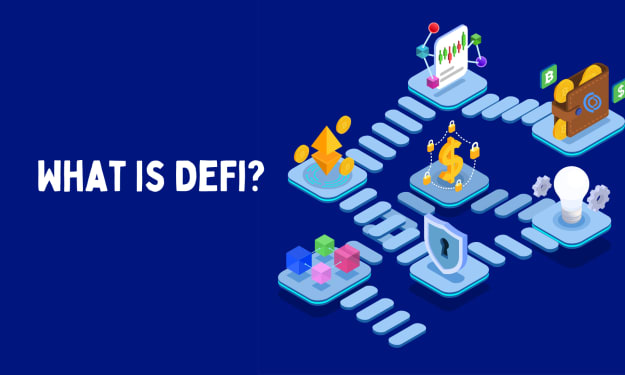The Future of Augmented Investment Management Industry: Will Blockchain and Technological Innovation
Blockchain and Technological Innovation

We are currently standing at the helm of the fourth revolution, where advances in computing power and lower costs of computing has enabled us to apply natural language processing, artificial intelligence, machine learning and neural networks to seemingly mundane tasks. Though our previous generations were instrumental in developing efficiencies in established processes, technologies of today go much beyond – offering an opportunity to augment these in new ways, and not simply eradicate established methods of managing wealth. These opportunities for wealth management are genuinely path breaking.
Where did it start and where we are now
To give a brief reminder, there have been four industrial revolutions till date that have been instrumental in shaping the way wealth management functions today. These revolutions have primarily witnessed the rise of mechanical power, the advent of electricity and communications, the digital age and an era that builds and extends the impact of digitization in new and unanticipated ways. Though technological advances have been a constant in the financial services market, the way wealth management have evolved to these changes can give us a sufficient estimate of where and what the future lies in.
When it comes to wealth management, the early 20th century era witnessed the hand delivery of documentation; the mechanization of those hand-to-hand processes and the development of computing solutions – all in a gradual manner. That initially involved the old ‘coffee-house’ method of investment, involving exchange of handwritten company documents, which later developed into the old stock exchange trading floor, complete with jobbers and runners to distribute the news. Much later, the use of ticker-tape machines to send information across huge distances was made possible by laying telegraphic cables across the world, providing a new richness and depth of information for investors.
When computer networks began replacing the ticker-tape machines in the late 1960s, gathering information from price sources around the world was made much easier. This was followed by the development of the internet and online retail brokerage systems, democratizing access to data about companies and other investment opportunities perhaps much more significantly. A lot of the information previously prized by wealth managers as sources of insight was now available to the investing public at the click of a mouse.
In this gradual progress of wealth management and its processes, what has also changed significantly is the value proposition it has, since merely having a stock price or news, analyzing the data and acting on that analysis or even obtaining the crucial data quickly to make wealth management decisions is no longer sufficient. We are now entering a new era with more complexities (and hopefully much better opportunities) for wealthmanagement and need to have more awareness about new ways and techniques to manage wealth than ever.
What is wealth management and why do you need it more than ever?
The practice of wealth management basically involves finding ways to protect and build wealth in order to pass it down the generations. As this wealth grows, and as clients’ family trees grow new branches, the number of clients expands exponentially.
Given the above and cross referencing with the average aging rate in Asia which is set to rise to more than 25% or 1.3 billion people by 2050, we are currently at the tipping point of the ‘greatest wealth transfer’ in the history. A flow of wealth and assets from parents to their children therefore puts wealth management at a crucial position in terms of generating value, but also requires the firms to understand the risk tolerance of the customers, how they choose to invest and how they prefer to communicate. Whereas, for advisors the risk is that, without proper succession planning, customers may switch wealth management firms – or wealth models altogether. Hence the need for wealth management firms is to leverage technology to achieve the necessary scale.
So what does the future look like?
The good news is that the expectations of the coming generations are very different. Let us look at what drives disruption in the wealth management industry and what can we learn from them about new technologies:
Changing customer profile: Customers today are more adapt to new technologies, using mobile apps and social media to interact with companies or search for information 24/7. Used to transacting with retailers and other financial services online, clients increasingly expect their wealth managers to provide a seamless customer experience, where they can interact via their preferred channel or device. With the generational change, trillions of dollars of wealth will soon be transferred to a new generation of wealth management clients – with new, digital preferences.
Client onboarding: This is often an area of frustration for customers, due to the high number of risk-related questions and repeated conversations required to set up an account. New entrants are solving these issues by using customer and behavioural data and gamification techniques to automatically identify the risk profile of clients, the loss acceptance levels, and to capture information as part of new regulatory requirements. Incumbents should keep up by exploring opportunities for cloud-based utilities to perform risk functions such as KYC, anti-money laundering (AML) and surveillance monitoring extremely cost-effectively.
Demand for transparency: Recent advice scandals have put the wealth management industry under unprecedented regulatory scrutiny, resulting in new costs and complexities that have seen international wealth managers closing or selling their businesses. This may have the potential to affect the existing operating model of wealth management by putting the emphasis less on product push and more on holistic financial planning and advisory. Wealth managers relying on legacy systems will not be able to handle the volume of regulatory change coming down the pipe.
Opportunities for blockchain and advanced technologies
Robotics and artificial intelligence, are transforming the user experience and service quality, while greatly reducing operating costs.
Distributed ledger technology (DLT) provides a more radical option, replacing existing architecture, increasing transparency and reducing costs. The most well-known example of this technology is blockchain, a technology that allows multiple parties to share data in a trusted environment, creating a single source of truth.
Blockchain allows all parties to access the record, instead of centralizing those records with a single entity. Many new areas for the use of blockchain are starting to be explored, such as sharing know your client (KYC) data, fund transfer agency and trade finance.
Other technologies like Robotic process automation (RPA) is particularly useful, as it can be implemented on top of legacy systems, enabling transformation programs to be completed in weeks – not months. RPA uses software "bots" performing rule-based, high-volume, repetitive tasks on a computer. The bots perform just as a human would, except substantially faster, with 100% accuracy and no breaks, leading to more than 70% productivity improvements over paper-based, manual processes. To date, the wealth management industry has been slow to embrace this technology. However, some exciting use cases can be seen emerging, including automated client onboarding and using chat robots to support basic account enquiries such as finding the latest discounts and reporting lost cards.
Younger generations prefer to be self-directed investors, who can call on expert advice if needed. They will be significantly more comfortable with robo-trading than older generations.
Connecting Market Data and Client Data
Because of the reasons mentioned above, new and emerging technologies such as blockchain, The amount of information, data and news that is generated and delivered daily is massive – and increasing. As technology becomes more prevalent in our lives, so does the amount of data generated, either intentionally or as a by-product.
In the financial services industry, our traditional definition of data has usually included asset prices, earnings data, news and the like. However, data from other sources can now be brought together, with the advent of greater computing power to provide a much richer view of the world and the investment opportunities it affords. Whether it is sensor data from a factory line, or sentiment sensed by a chatbot or in a tweet, the world of useful data is exploding.
This access to data and the advent of greater computing capacity, place the burden on the wealth manager to recognize the most relevant information and to filter out the noise. This is where cognitive computing can assist. Tools such as intelligent tags, entity identifiers and other tools help to clean and process data to ensure that powerful algorithms deliver insights to investors.
As the potential client base grows, wealth managers can also collaborate to provide a wider range of services to attract and retain potential clients. Collaborating with others, to combine data to yield new insights for investors, is an enormously attractive option for potential clients.
Future investors will be looking for opportunities In blockchain development company beyond conventional investment strategies and be aware of the data, news and events that generate investment opportunities. The successful wealth managers will be the ones who can demonstrate that they have access to all of that information as well, combined with the capability to use it to drive investment solutions.
About the Creator
AVNI SAVALIYA
I breathe digital innovations, & Marketing. I am Content Writer, Digital Marketeer, Avid Reader, Constant Learner & Die Hard Badminton Fan






Comments
There are no comments for this story
Be the first to respond and start the conversation.